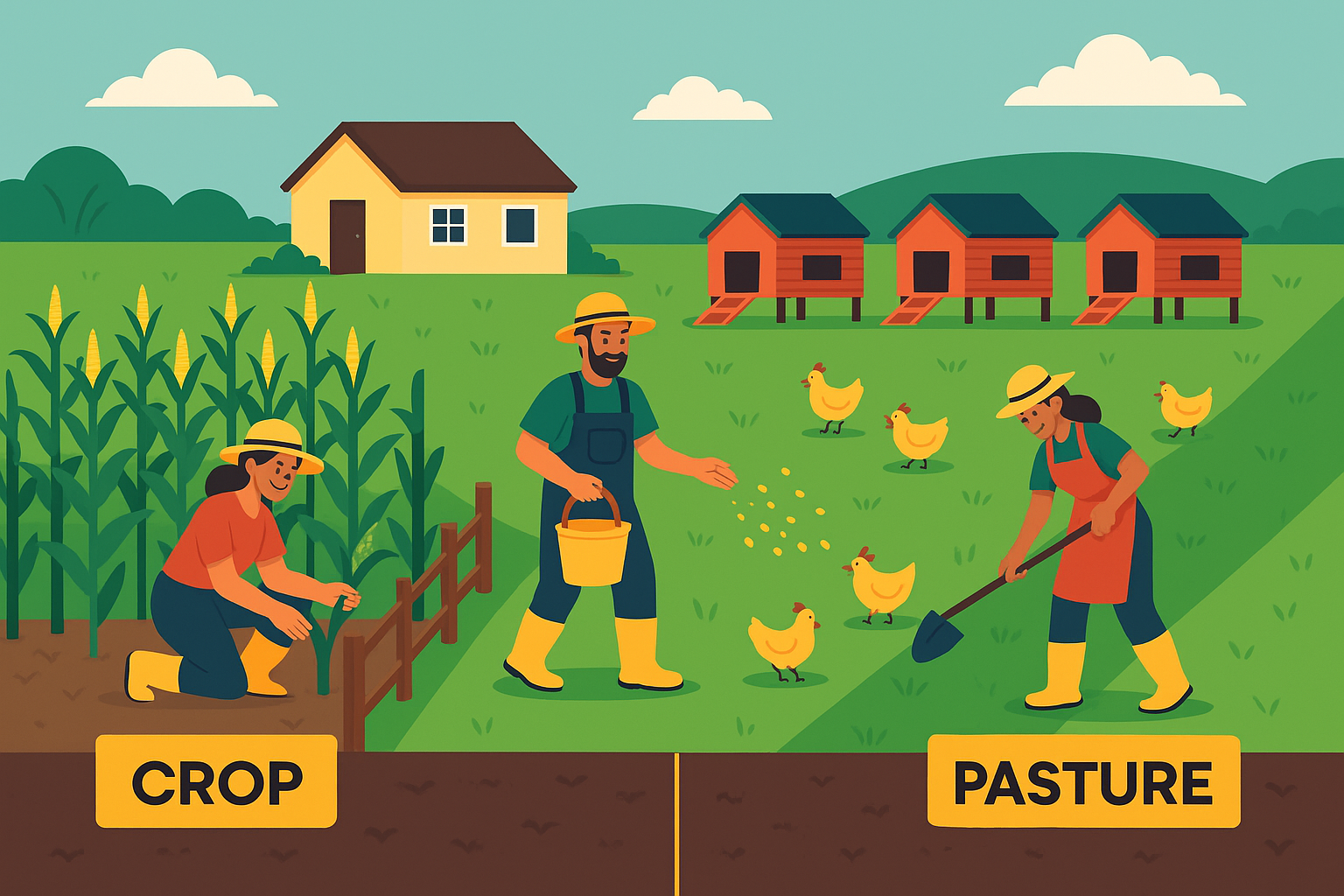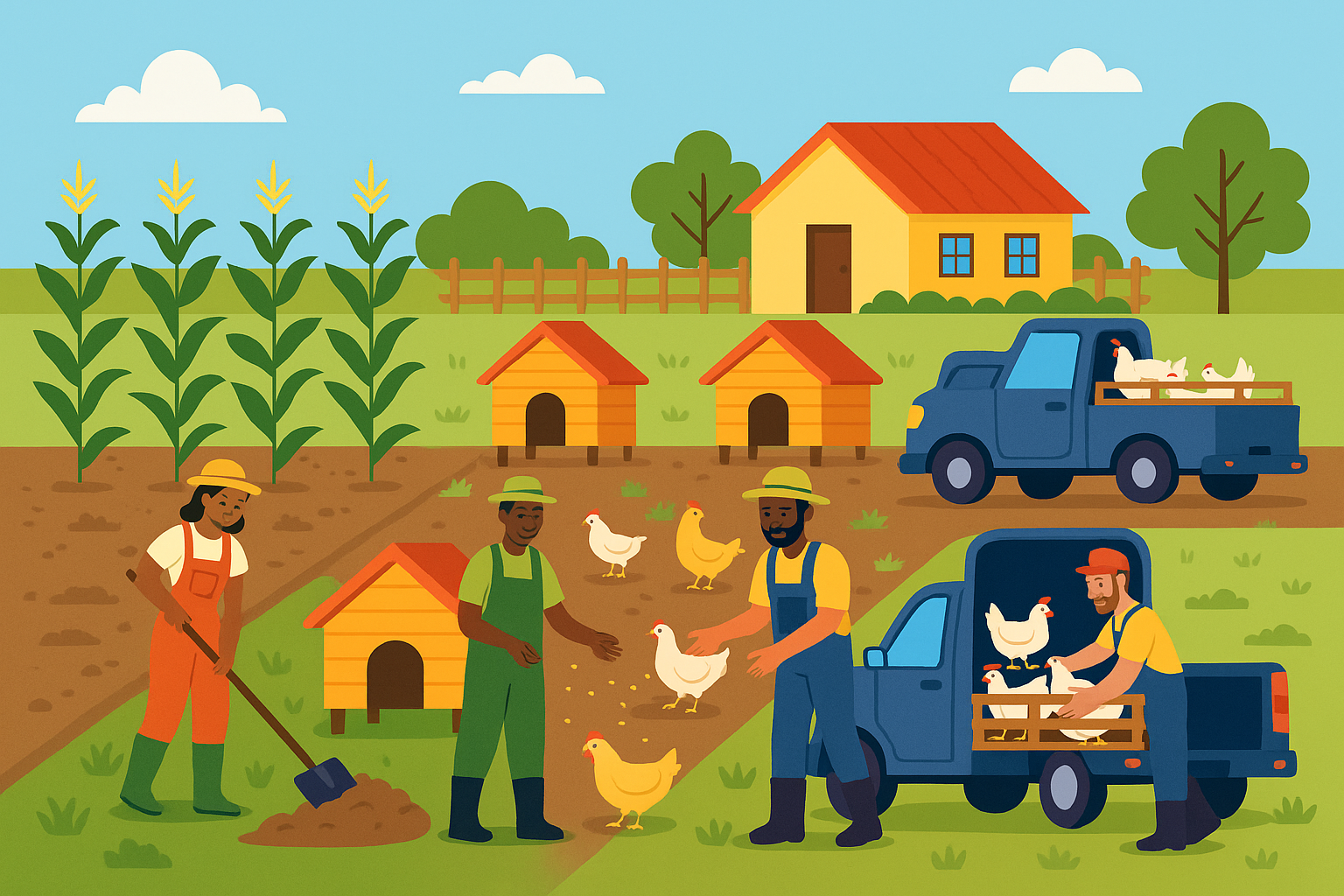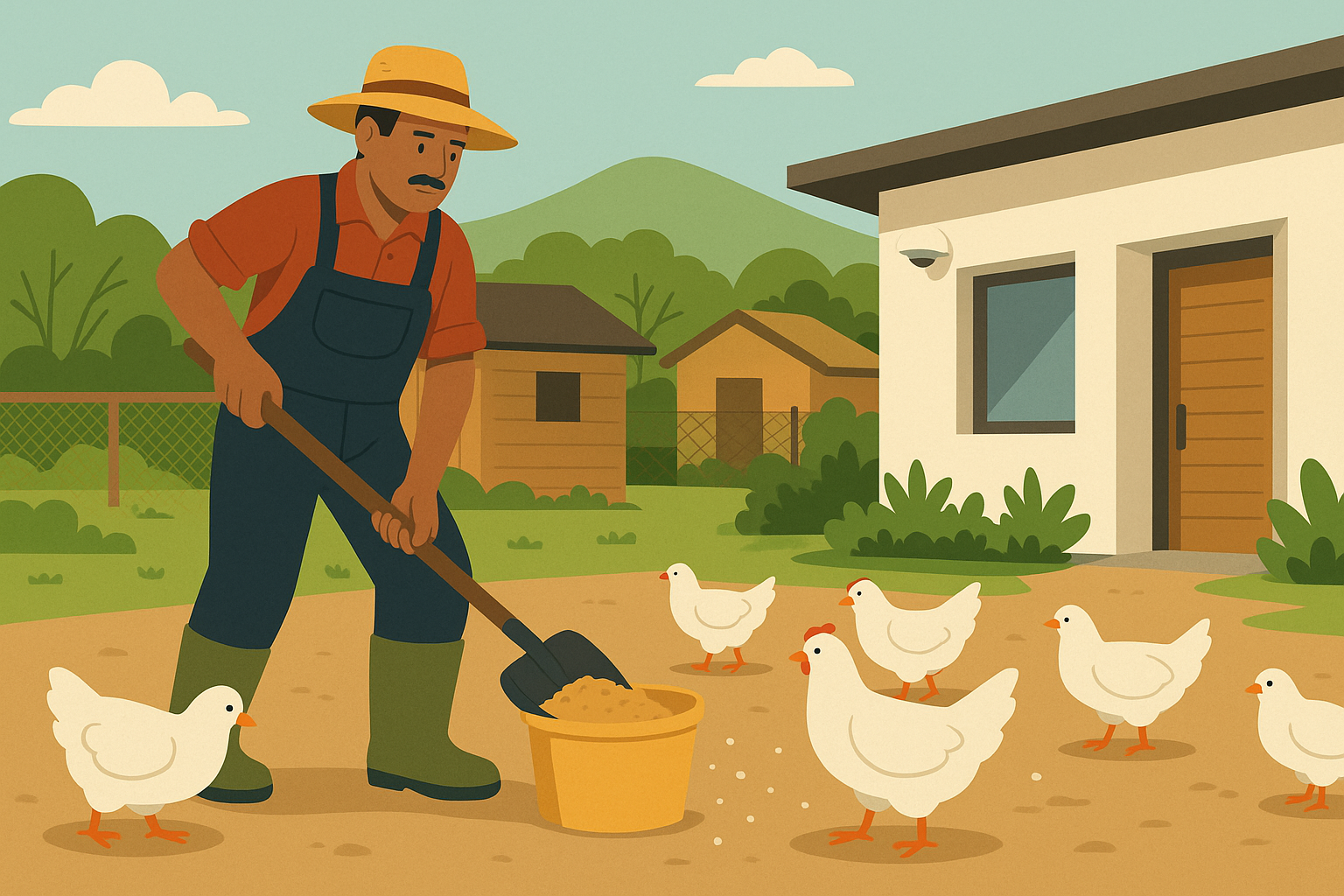Fresh, Fast, and Profitable: Income from Every Flock
A broiler chicken farm is often the most profitable use of small or medium parcels of land, especially in rural El Salvador, because it generates a high income relative to the space, infrastructure, and capital required. Unlike crops or livestock grazing, broiler production can be done intensively in a compact area — even a quarter-acre can house thousands of birds in rotation — allowing you to maximize earnings per square meter. With a controlled environment and good management, broilers reach market weight in just 6–8 weeks, enabling multiple production cycles per year. This fast turnover means you can realize cash flow every two months, compared to seasonal or annual harvests with crops.
Additionally, the input costs (feed, chicks, water, basic housing) are predictable and relatively low, while the demand for fresh chicken meat in local markets remains consistently strong and stable. The price per kilogram is higher and less volatile than most staple crops, and the risk of total loss from weather or pests is much lower than in agriculture. When combined with a reliable worker and basic monitoring, the farm requires little day-to-day oversight from you, making it ideal for absentee owners. For these reasons — high yield per square meter, quick cycles, steady market demand, and manageable risk — broiler farming stands out as the most profitable and practical use of your property, especially when integrated with the Sanctuaries system.

Broiler Chickens & Feed Ratio The Basics
Broiler chickens are fast-growing meat chickens, bred specifically for efficient weight gain and quick turnover. They reach market weight (about 2–3 kg) in as little as 6–8 weeks under good conditions.
One of the key performance measures in broiler farming is the feed conversion ratio (FCR).
What is FCR?
FCR measures how efficiently chickens convert feed into body weight:
For example, an FCR of 1.6 means the chicken needs 1.6 kg of feed to gain 1 kg of weight.
Typical Broiler FCR:
- Modern broiler genetics and management can achieve an FCR of about 1.5–1.8 at market age.
- In less controlled environments (like small farms), FCR may be closer to 2.0–2.2.

From Field to Market, Made Simple
Collecting and selling broiler chickens at the local market in El Salvador is a simple but effective way for small farmers to turn their production into immediate cash flow. When broilers reach the desired market weight, usually after 6–8 weeks, they are collected early in the morning to minimize stress and maintain quality. The birds are slaughtered, cleaned, and either left whole or cut into parts, then kept chilled or on ice for freshness. Farmers load the prepared chickens and transport them to the municipal market, where activity starts as early as dawn. Having the birds well-presented, properly weighed, and hygienically packaged increases their appeal to buyers looking for fresh, local meat. Farmers often use basic crates, insulated coolers, and a small scale to handle sales professionally on-site.

Quick to Sell, Easy to Profit
Collecting and selling broiler chickens at the local market in El Salvador is a simple but effective way for small farmers to turn their production into immediate cash flow. When broilers reach the desired market weight, usually after 6–8 weeks, they are collected early in the morning to minimize stress and maintain quality. The birds are slaughtered, cleaned, and either left whole or cut into parts, then kept chilled or on ice for freshness. Farmers load the prepared chickens and transport them to the municipal market, where activity starts as early as dawn. Having the birds well-presented, properly weighed, and hygienically packaged increases their appeal to buyers looking for fresh, local meat. Farmers often use basic crates, insulated coolers, and a small scale to handle sales professionally on-site.
Stay Connected. Stay In Control
With the Sanctuaries system, you can confidently manage your property and broiler operation in El Salvador from abroad because we help you find and place a trusted, experienced local worker at your home. As part of our offering, Sanctuaries leverages its connections in the local community to screen, interview, and recommend reliable candidates who already have experience with basic farming, poultry care, and property upkeep. We prioritize individuals with a good reputation, proven work ethic, and familiarity with the kind of sustainable systems we design into our homes. This ensures that your worker understands how to care not only for the chickens, but also the house, water systems, and grounds properly. We assist you in drafting a clear, bilingual agreement covering duties, pay, and reporting, giving you peace of mind before you even leave the country.



How the 50/50 Feed-to-Pasture System Works
Our 50/50 feed-to-pasture system is designed to raise healthier chickens at a lower cost, while maximizing profitability and sustainability. In this approach, chickens spend about half their time on natural pasture, where they forage for grasses, seeds, and insects — reducing dependence on purchased feed. The other half of their diet comes from balanced, nutrient-rich commercial feed to ensure consistent growth and weight gain. This system not only cuts feed costs by up to 50% compared to fully-fed flocks but also produces healthier, more flavorful birds that command premium prices at market. Pasture rotation keeps the land productive and minimizes disease, while customers appreciate the improved quality and more natural upbringing of the chickens. It’s a smarter way to raise poultry — good for your bottom line, good for your land, and good for your buyers.

Balanced Birds, Better Profits: 50% Feed, 50% Pasture
"I can't say enough about the outstanding service I received from your company. Their team went above and beyond to meet our needs and exceeded our expectations."
Oliver Hartman